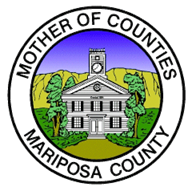Fire Education Resources
UC ANR Fire Network
No matter where you are in California, you are likely affected by fire. Maybe you’re in an urban area experiencing smoke from distant wildfires, or maybe you’re a landowner who’s interested in using prescribed fire to maintain your property. You might be retrofitting your home to be more resilient to wildfire or rebuilding your home and community after a fire-related loss. Perhaps you are a policymaker looking to connect with local communities, or an Indigenous Californian working to revitalize your tribe’s cultural practices. Whoever you are, the UC ANR Fire Network is here to help!
The UC ANR Fire Network is a statewide team with expertise across a wide range of disciplines, including fire science and ecology, prescribed fire, home hardening and defensible space, community and regional planning, grazing and fire interactions, and much more. The Network includes specialists on UC campuses, advisors and staff in local communities, and broad networks of partners and volunteers. The goal of the Fire Network is to inspire and empower Californians, connecting them to the research, training, and tools they need to live with fire in California.
FireWorks K-12 Curriculum
FireWorks is an educational program about the science of wildland fire, designed for students in grades K-12. FireWorks provides students with interactive, hands-on materials to study wildland fire. It is highly interdisciplinary and students learn about properties of matter, chemical and physical processes, ecosystem fluctuations and cycles, habitat and survival, and human interactions with ecosystems. Students using FireWorks ask questions, gather information, analyze and interpret it, and communicate their discoveries.
The FireWorks program consists of a curriculum and a trunk of materials, including laboratory equipment, specimens, and kits of specialized materials for educators. While many of the activities can be used in any ecosystem, many are applicable to specific regions. FireWorks has specialized curricula to learn about:
- Fire in the Northern Rocky Mountains and Northern Cascades
- Fire in the Sierra Nevada
- Fire in the Sagebrush Ecosystem
- Fire in the Missouri River Country (from the northern Rocky Mountain Front to the tallgrass prairies)
- How and why the Pikunii (Blackfeet) people carried fire
The program has also been adapted to Colorado ecology (implemented by Colorado Project Learning Tree), and we offer a 'generic' version for educators to adapt to their specific ecosystems.
Educator workshops are offered each year to teach educators, community leaders, and agency communicators how to use FireWorks. Two research projects have shown that FireWorks increases student and adult understanding of wildland fire (see FireWorks: Hands-on Education).
The FireWorks Educational Program is produced by the Fire Modeling Institute (FMI) of the US Forest Service, Rocky Mountain Research Station, Fire, Fuel, and Smoke Science Program (FFS).
The California Fire Science Consortium is a fire science network of scientists and managers that strives to accelerate the awareness, understanding and adoption of wildland fire science information by federal, tribal, state, local and private stakeholders within similar regions.'
On their website, you can find webinars, 1-2 page research briefs and get newsletters to stay up-to-date on the latest fire science.
The Center for Fire Research and Outreach at Berkeley Forests has a goal to develop and disseminate science-based solutions to wildfire-related challenges.
Visit their website to learn about current wildfire research taking place through UC Berkeley



